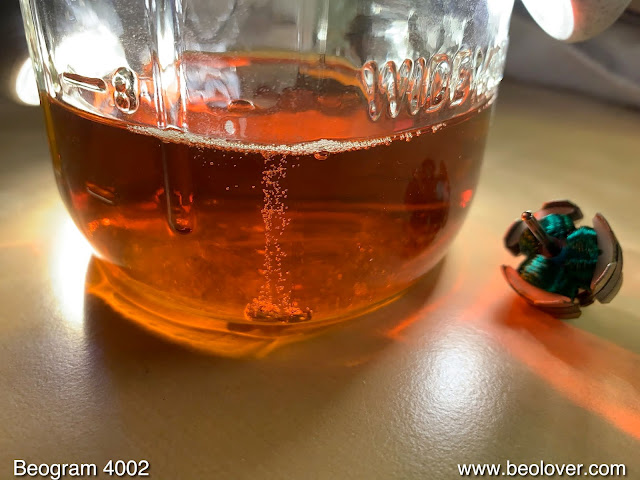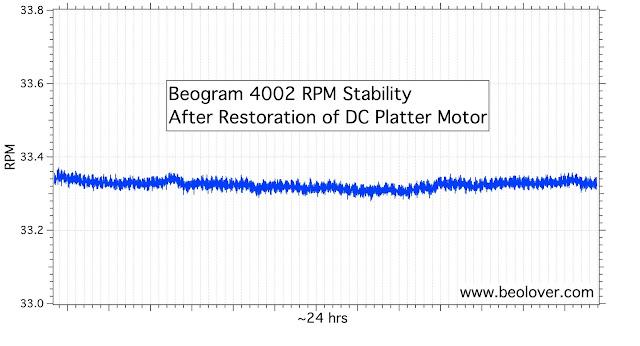Another Beogram 4000 recently arrived from Michigan for a restoration. I had sent out a double box shipping container with detailed instructions, and so shipping went well. This shows the unit as received:
The aluminum surfaces are in pretty good shape, but there is one ding on the plate that surrounds the platter:
The platter itself is in pretty decent condition, and so are the keypads and small aluminum plate. Unfortunately the plinth had one corner 'shaved' at some point:
Luckily, the owner sent a set of plinth panels along, which I will transfer to the metal frame that holds them in place around the enclosure. The hood is badly scratched, but is seems mostly on the outside, so I should be able to polish it back to a decent state.
The black hood hinge and the back end of the enclosure show the often found corrosion marks:
I may need to sand and paint, or use spare parts from another Beogram.
Under the hood the unit seems in original condition, which is always the best starting point for a restoration. The contact terminals of the mechanical switches show the usual strong oxidation and signs of attempts to make them function better by bending them out of shape:
This means one has to extract them and straighten them out. I usually plate them with nickel and gold during this process to prevent future oxidation.
This is an early 4000, as indicated by the motor pulley without side walls, and the external belt guides:
I later models this setup was replaced by a pulley that has sidewalls to prevent the belt from falling off, which allowed eliminating the separate guides.
During shipping the cracked plastic pulley came off:
But due to placing cut to size foam under the hood the carriage did not 'go rogue' and so damage was prevented. The unique red position indicator usually breaks when the carriage liberates itself from the pulley, but in this case it survived:
On the sad side, some tape was placed directly on the arms cover, which lifted off some of the lettering:
Unfortunately, the ubiquitous later 4002 and 4004 versions state "Tracking Force Adjusting" instead of "Tracking Weight Adjusting", i.e. it is difficult to find a replacement with the correct lettering.
After this visual inspection, I reinstalled the pulley and pressed ON and the unit came to life. A good sign is that the strobe bulb works fine.
The carriage also started moving sluggishly, and the LP set down point was found and the arm tried to lower itself, but the mechanism is stuck due to hardened lubricants. Nothing unexpected.
Bottom line: This unit is a decent starting point for a full restoration, and I am pretty confident that it will come out with a like-new performance, but a few small cosmetic flaws. But most have some 'wrinkles' after ~50 years of service life (like the Beolover...;-).























































